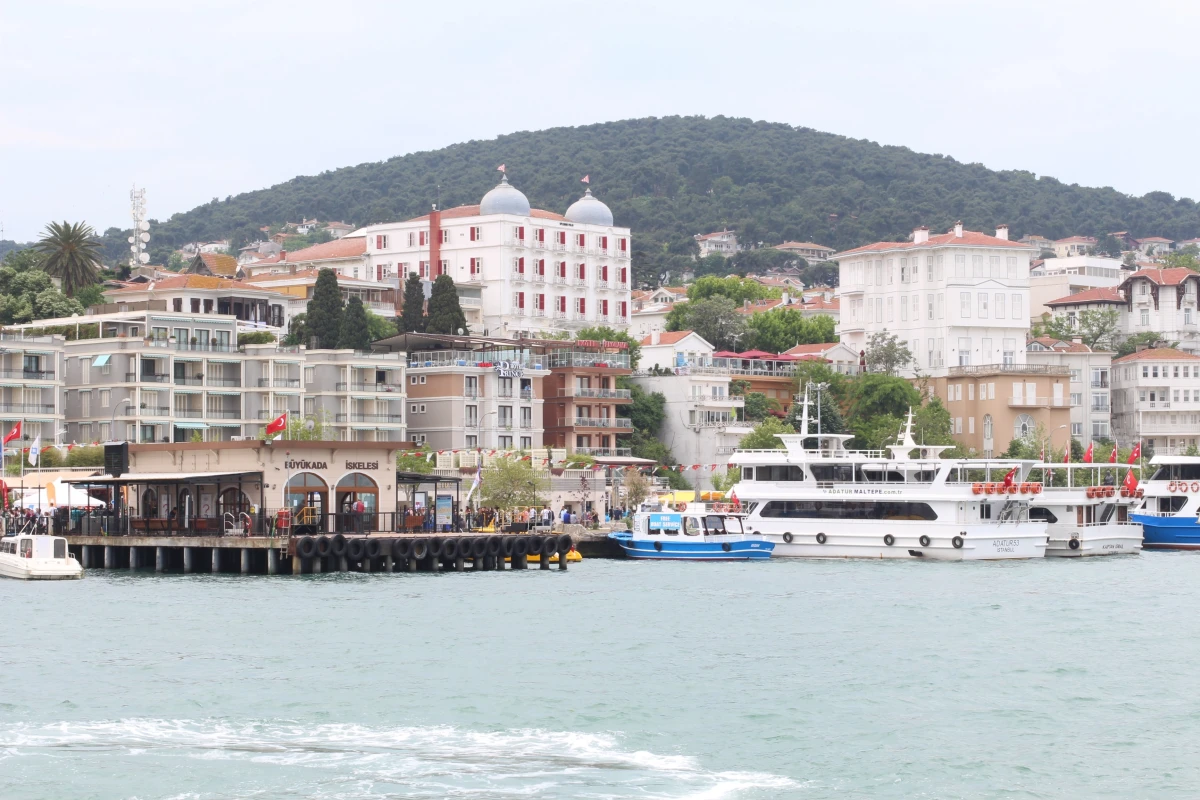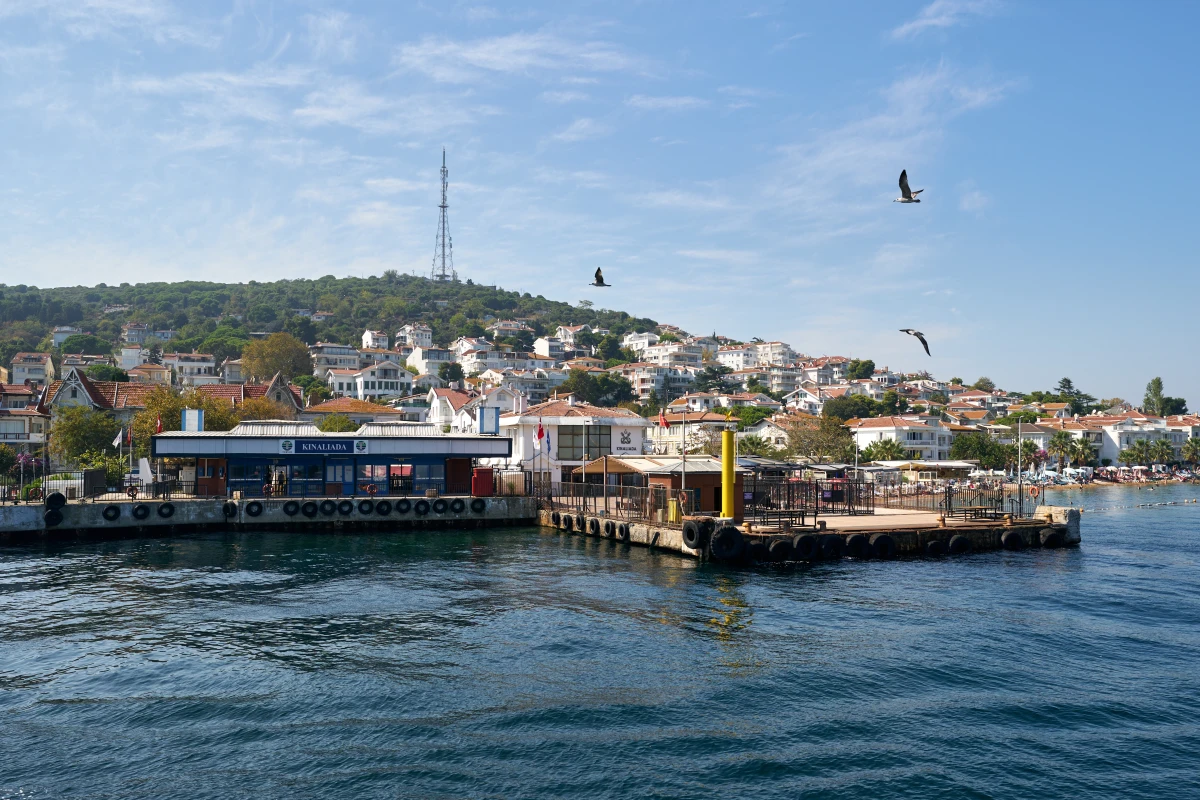With its pine forests and elegant mansions, Burgazada is the second island in our Princes’ Islands series. Before the Ottoman conquest, it was known as Pirgos, meaning castle, and later adapted to Burgaz by the Turks. For the Greeks, the island carried the meaning of a “safe harbor.” Today, it continues to offer visitors a calm retreat from the city.
In this blog post, we’ll explore the island’s streets, churches, monasteries, historical figures, literary treasures, and culinary experiences, while pointing out the best spots to enjoy the scenery.
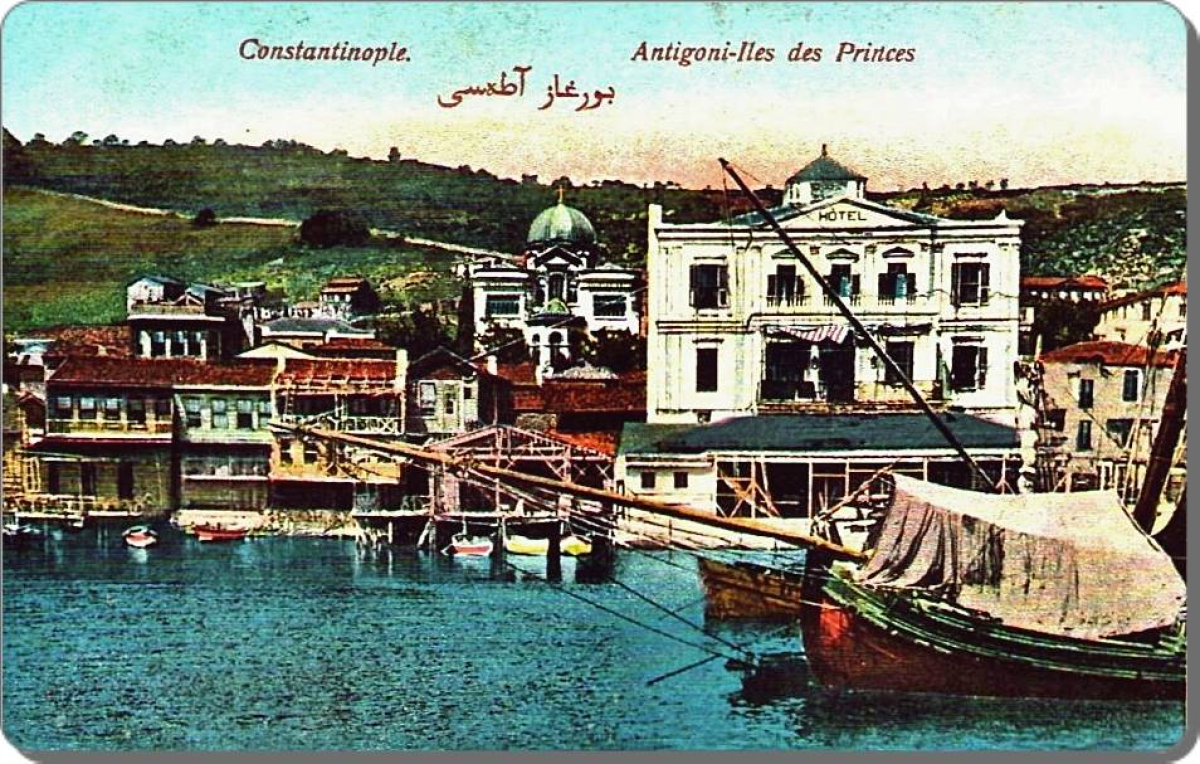
Plan Your Visit
| 🗺️ How to Get There | Ferry from Kabataş, Eminönü, or Bostancı via Şehir Hatları or private lines. Approx. 40–80 minutes depending on departure pier |
| 🌄 What to Do | Visit Aya Yani Church to explore Greek culture. Learn about Turkish litreature at Sait Faik Abasıyanık Museum Wander at Gezinti, Gönüllü and Mehtap Streets and admire 19th-century wooden houses. Walk around the Madam Marta Bay to capture the best views of Istanbul and the shores of the Marmara Sea. |
| 🍽️ Eat & Drink | Try out Sahil Restaurant with delicious sea food with mezzes (side dishes) |
| 🕓 Best Time to Visit | Spring and early autumn for mild weather and fewer crowds. |
Before reading the blog in detail, you can check out our interactive walking route map to plan your visit.
Getting Around the Island
The charm of Burgazada begins with its quiet lanes lined with historic mansions. Among the most notable are Gezinti, Gönüllü, and Mehtap streets, where visitors can admire the island’s finest examples of 19th-century wooden houses. Surrounded by pine trees and a serene atmosphere, these streets are perfect for a leisurely walk.
Every turn reveals a glimpse of Burgazada’s distinct character. The architecture speaks of the island’s multicultural past, blending Greek and Ottoman influences in graceful façades. Wandering these lanes provides not only a view of elegant homes but also a sense of stepping back into Istanbul’s layered history.
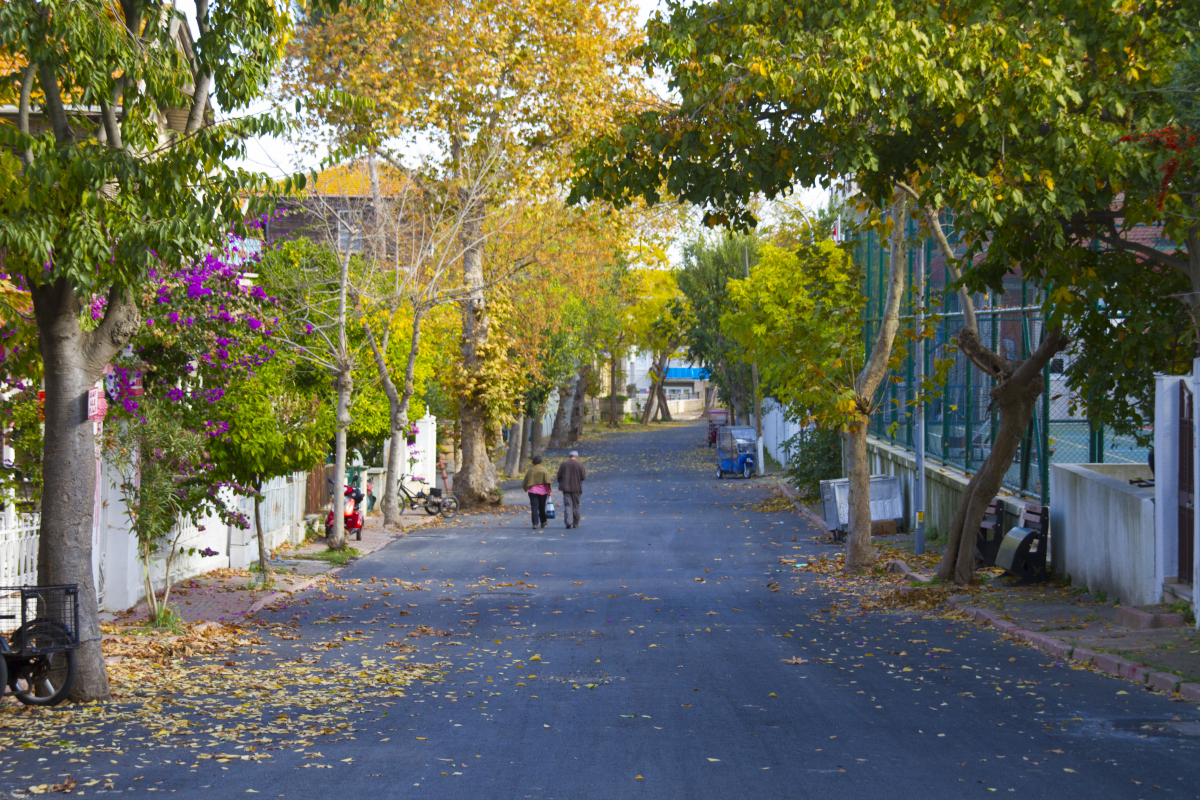
Aya Yani Church
One of the island’s most remarkable religious landmarks, Aya Yani Church, stands on the site of the dungeon where Saint Methodius was once imprisoned. He suffered immensely, receiving 700 lashes for opposing the emperor’s decree to remove icons from churches. Eventually, a later emperor pardoned him, appointed him as Patriarch, and restored the icons. The church itself was later rebuilt by the son of Perikles Dimades, the architect of the Fener Greek Orthodox Church. Every year on August 29, the community gathers here to commemorate the saint’s beheading, and some of his relics remain preserved on the island, while others are kept in Topkapı Palace.
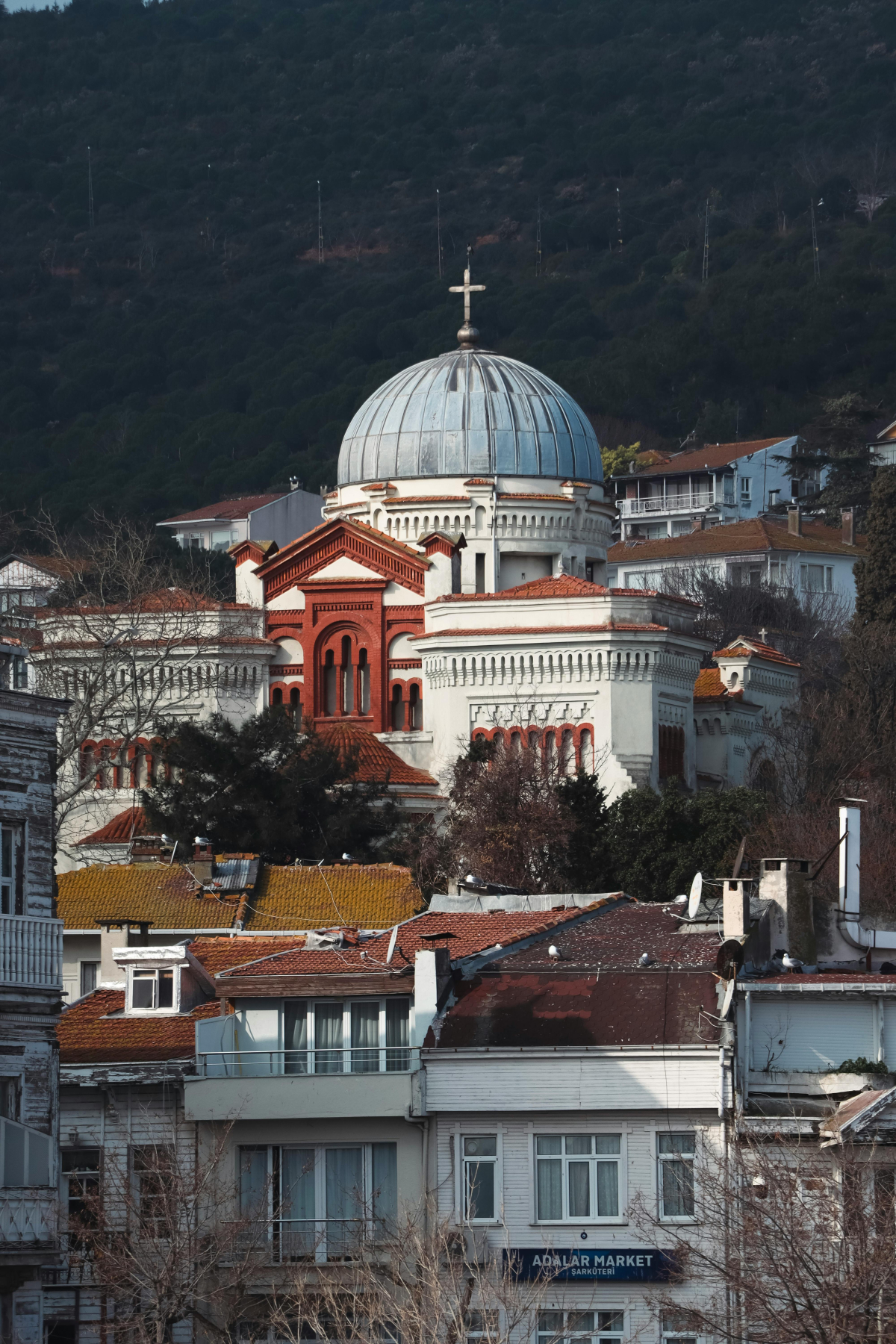
The church’s interior is filled with symbolic detail. The pulpit depicts the Four Evangelists, whose works were confirmed at the Council of Nicaea, while the Patriarch’s throne stands on the right, once reserved for patriarchs and despots. The iconostasis highlights the Virgin Mary to the left, Christ Pantocrator to the right, and John the Baptist at the center, with Saint Nicholas placed on the far left. The rear section is restricted to clergy, where a crucifix of Christ bears the inscription INBI: Jesus of Nazareth, King of the Jews. In the apse, a striking depiction of the Virgin Mary, accompanied by Christ, completes the sacred atmosphere.
Aya Yorgi Karipi Monastery
The Aya Yorgi Karipi Monastery was restored after the 1999 earthquake, preserving its wooden iconostasis and important religious imagery. Inside, one finds depictions of Constantine the Great and his mother, Saint Helena, with the True Cross from Jerusalem at the center. Alongside them stand Saints Cosmas and Damian, remembered as patron saints of medicine, and Saint Catherine on the left. In the middle, Saint Minas appears on horseback while Saint Spiridon holds the Gospel. The icons also include Saint Demetrius and Saint Pantaleon, both associated with healing, making this monastery not only a religious site but also a place of folklore and community rituals.
Local traditions bring the monastery to life each year. On August 27, the locals bake pide (a flat bread) in honor of Saint Fanourios. According to custom, unmarried girls place these under their pillows in hopes of dreaming of their future husbands.
Famous Residents and Historical Figures
Burgazada has been home to notable historical figures across centuries. Among them were Antigonus, the celebrated general of Alexander the Great, and his son Demetrius, both leaving a mark on the island’s legacy. Later, it also became associated with Emperor Basil I the Macedonian, a ruler whose story ties Burgazada to broader Byzantine history.
In modern times, the island is best remembered as the home of Sait Faik Abasıyanık, one of Turkey’s greatest literary voices. His life and work added a cultural depth to Burgazada, transforming it into a destination not just for nature and history, but also for literature.
Sait Faik Abasıyanık Museum
The spirit of Sait Faik Abasıyanık is closely tied to Burgazada, where he lived and wrote many of his stories. Known as a cornerstone of Turkish literature, he was even nominated as an honorary member of the Mark Twain Foundation. His distinctive style was influenced by André Gide, Comte de Lautréamont, and Jean Genet, yet remained deeply personal and local. His characters were ordinary people, presented with all their virtues and flaws, narrated in a poetic yet straightforward manner.
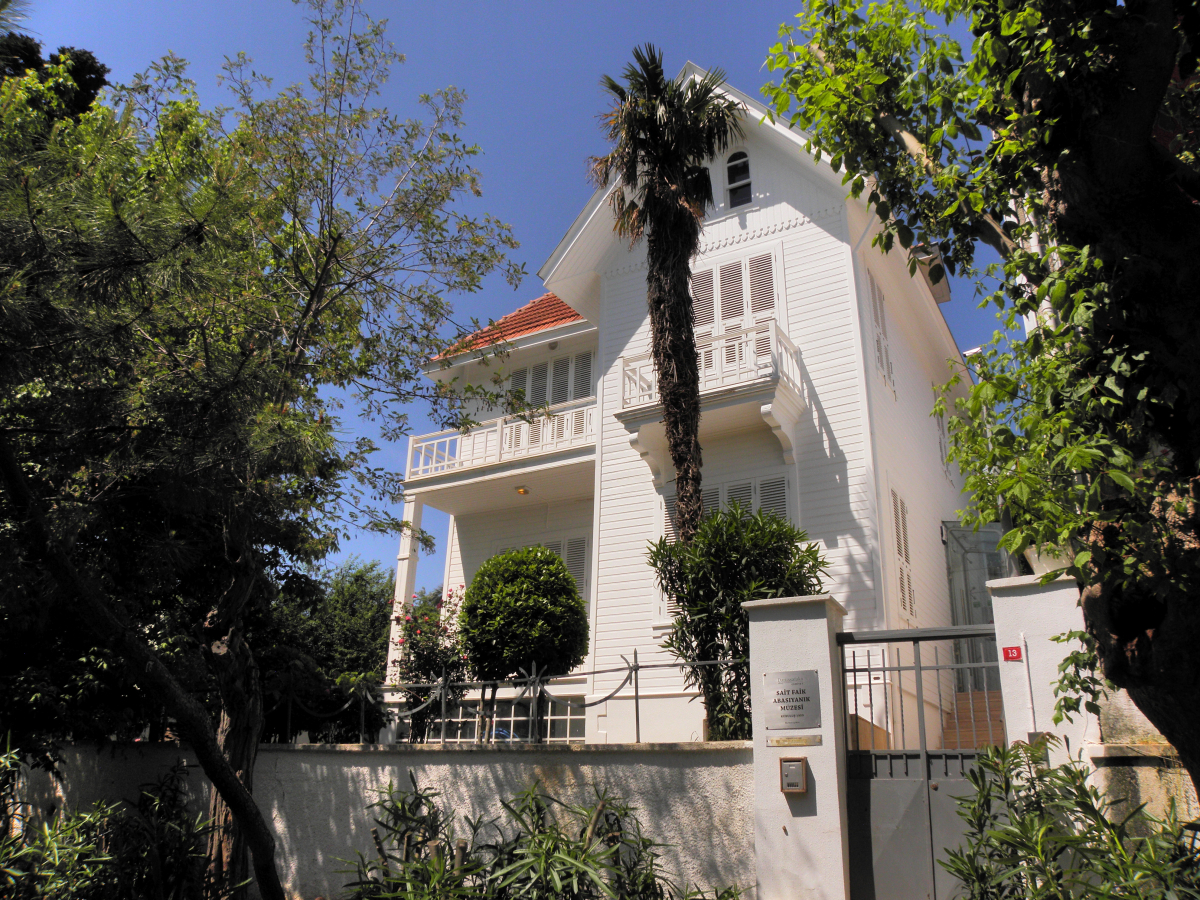
Visitors to the museum are welcomed into the author’s world. His famous line: “I sharpened my pencil. After sharpening it, I held it and kissed it. I would go crazy if I didn’t write.” echoes his passion for storytelling.
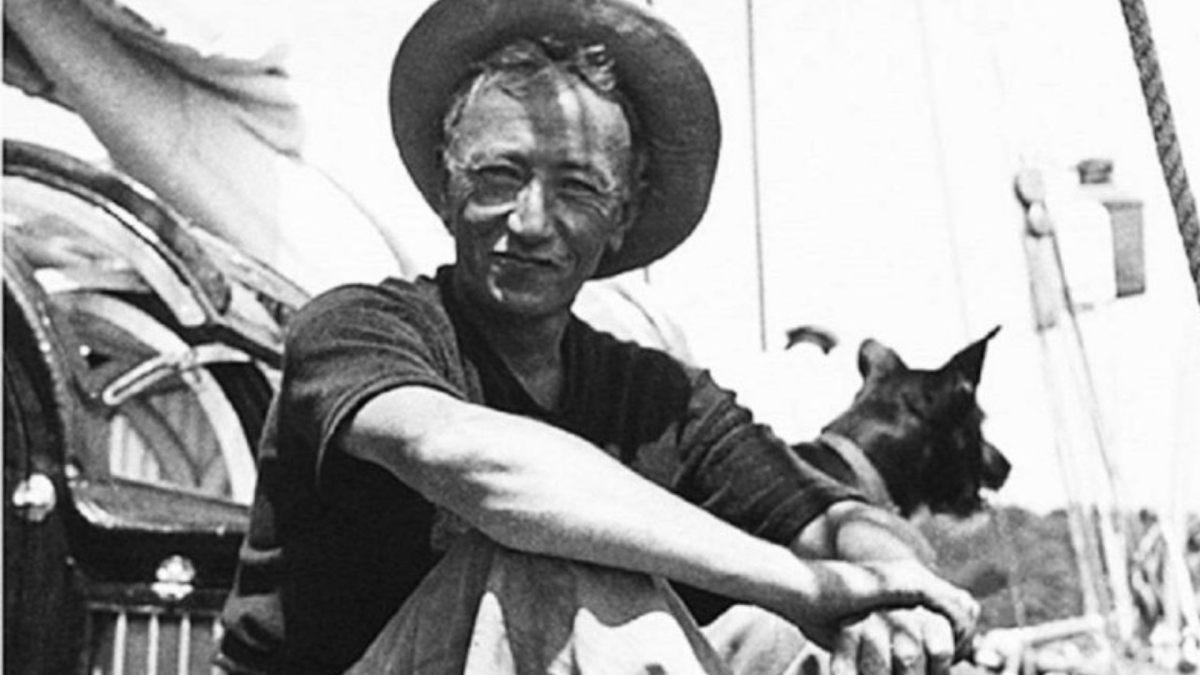
The displays are in Turkish, so using a translator app enhances the visit. The mansion itself, peaceful and charming, offers a rare chance to step into the daily life of a writer who shaped modern Turkish short fiction.
🕓Opening Hours: Wednesday–Sunday, 10:30 – 16:45
🎫Entrance Fee: Free
Sahil Restaurant
Located directly across from Burgazada Pier, Sahil Restaurant is an ideal spot for lunch or dinner. Beyond offering fresh seafood, it introduces visitors to the rich fish culture of the Princes’ Islands and Istanbul. Among the most popular fish are horse mackerel (İstavrit), bluefish (Lüfer), red mullet (Barbun), young bluefish (Çinekop), anchovy (Hamsi), and turbot (Kalkan). Since availability depends on the season, it is always worth asking which fish are freshest at the time of your visit.
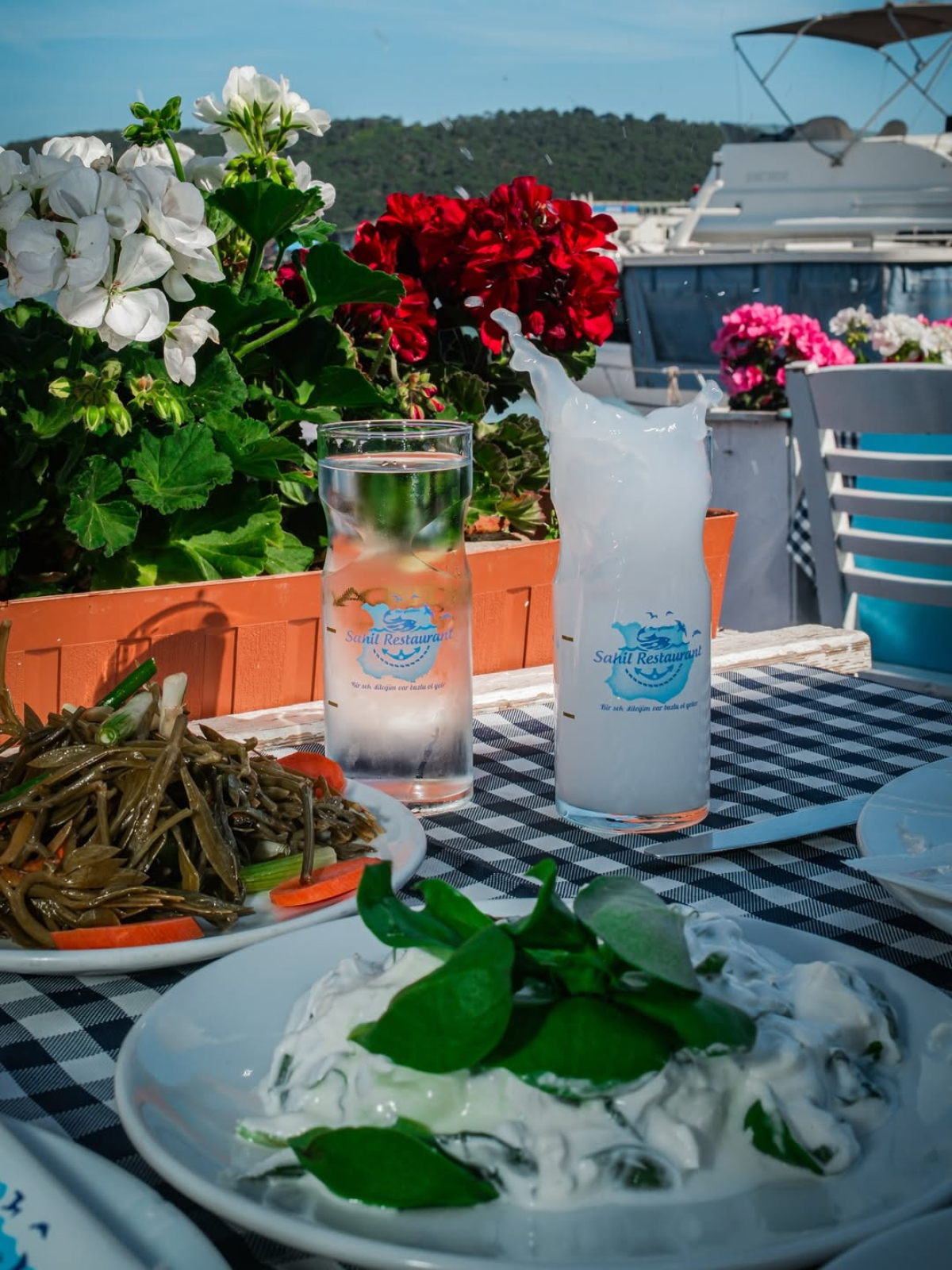
Also, thanks to our fish widget below, you can find out the most suitable recommendation on your own.
Classic pairings complete the dining experience. The most common drink with fish is rakı, Turkey’s iconic anise-flavored spirit, similar to Greek ouzo and known for its strong alcohol content. The table is further enriched by traditional mezes such as lakerda, atom, shrimp, haydari, hummus, and Gavurdağı salad. With its seaside view and authentic atmosphere, Sahil Restaurant remains a staple of Burgazada dining.
📞Reservations: +90 533 692 86 68
Final Thoughts
Burgazada is not just an island of pine trees and picturesque homes; it is a place where history, faith, literature, and culinary tradition meet. From the sacred atmosphere of Aya Yani Church and Aya Yorgi Monastery to the literary world of Sait Faik and the authentic flavors at Sahil Restaurant, the island offers an unforgettable experience.
For travelers seeking to explore Istanbul beyond the bustling mainland, Burgazada offers a perfect blend of serenity and culture, serving as a true gateway to timeless Istanbul.


